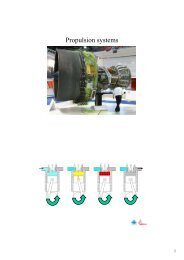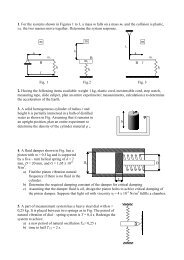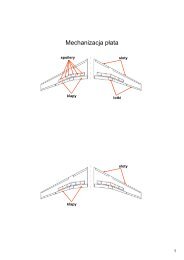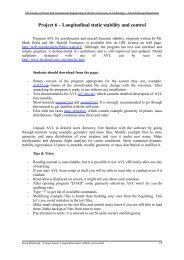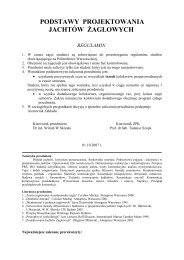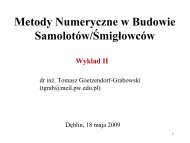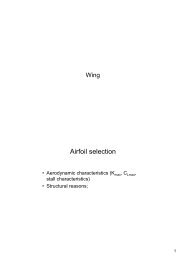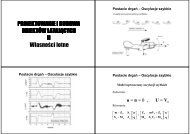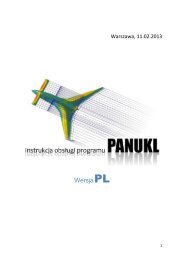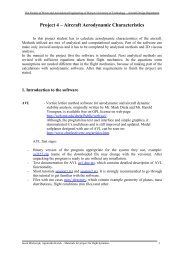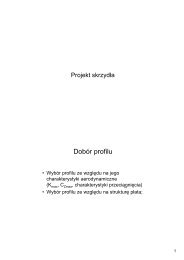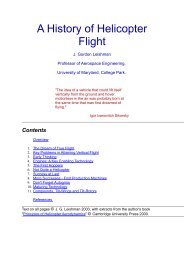PANUKL Help - ITLiMS
PANUKL Help - ITLiMS
PANUKL Help - ITLiMS
You also want an ePaper? Increase the reach of your titles
YUMPU automatically turns print PDFs into web optimized ePapers that Google loves.
1.1.2. Introduction<br />
The develop of CFD methods and big increase of the computers power caused, that Euler or<br />
Navier-Stockes models are used more often and potential methods could be seen as obsolete.<br />
However potential methods, despite many simplification are still the attractive tool [1,2,3]. Low cost<br />
and fact, that they are relatively easy to apply compensate their disadvantages and lower accuracy.<br />
1.1.3. Physical and mathematical model<br />
The most important assumptions made for physical model definition are that fluid is inviscid<br />
and irrotational (except vortex wake). The viscidity effect is simulated by Kutta-Joukowski boundary<br />
condition, what could be interpreted that circulation on the trailing edge is equal to zero.<br />
The mathematical model is as follows:<br />
- continuity equation:<br />
- Eulera equation:<br />
- state equation:<br />
V<br />
t<br />
<br />
+ div( V)<br />
= 0<br />
t<br />
+ ( V grad) V =<br />
p =<br />
<br />
p ( )<br />
<br />
<br />
1<br />
grad p<br />
<br />
Because fluid is irrotational (rot V = 0) the scalar function, called velocity potential can be defined and<br />
the following condition is satisfied:<br />
<br />
grad (x, y, z, t) = V<br />
(4)<br />
If we assume, that = + and: mod U, mod a and mod (U-a)<br />
then we obtain:<br />
1 <br />
2<br />
( + V<br />
t<br />
<br />
) = <br />
x<br />
assuming additionally, that flow is steady and incompressible, we have:<br />
a<br />
= 0<br />
(6)<br />
(1)<br />
(2)<br />
(3)<br />
(5)<br />
5



